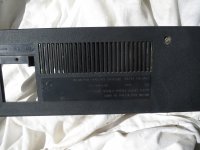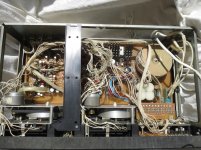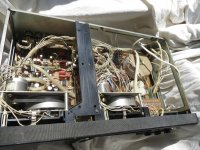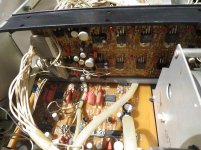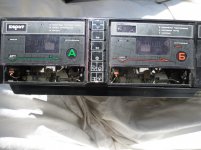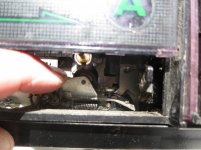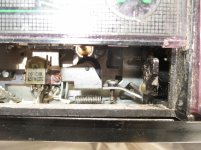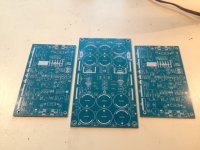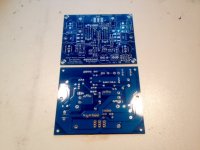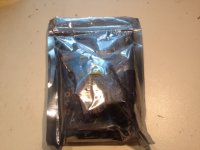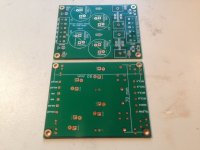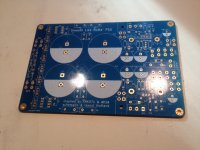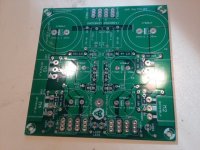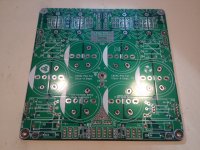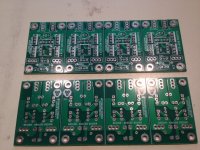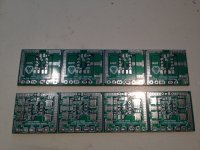It looks like GRS has picked up the technology of the B&G Neo line of planar drivers and Parts Express is now selling them. This is a great time to revisit what you might make out of this line of drivers. Here are some thoughts about how to best use the largest member of the lineup as a dipole midrange.
I've always wanted to get my hands on the Neo10 but never quite did, but have just ordered a pair of the GRS PT5010. It seems to be an almost exact clone, at least visually. I took a look at the response plot that GRS provides in the datasheet to get some clues about how I can best use this driver. I like to build dipole loudspeakers, and the PT5010 can potentially work as a midrange. I assume the response that GRS is providing in the datasheet is with infinite baffle loading:
I was hoping to cross over to it around 700 to 800 Hz, but the response is starting to sag there, with the SPL dropping down to under 90dB/W (the driver is rated at a nominal 94dB@2.83V).
To get a sense of what I might expect in a baffle of anything from zero (nude) to as large as I want to go I used the Edge to simulate some responses at a few angle up to 45deg off axis. I thought I would share what I found, which I think is indicative of how many drivers in planar baffles will behave as you vary the baffle size. Keep in mind that this is only the response of the baffle - you have to add it to what the response of the driver will be, e.g. its nearfield response. For that I will use the MFG curve for now until I can measure it myself.
First, let's look at the "no baffle" or "nude" response. It looks like this:
This has a very smooth response. The curves all follow each other, with only a bit of narrowing above 1.5 to 2k Hz. I would call this "CD like". There is very little sign of a classic "dipole peak". But since the low frequencies start to roll off just about 1kHz using the driver like this would only add to the downsloping response based on the MFG data.
OK, since I was planning to build a "slim" dipole system, how would the driver look in my narrow baffle? I tried out a 36" high, 10" wide baffle with the top edge of the driver at the top edge of the baffle. This what that looks like:
We can see that even this slim baffle has changed the response quite a bit. Now the response has a broad hump in it, centered around 1kHz. The result is that the response below that point has been brought up by a few dB. This would help to offset the losses from the driver in that region. OK, good so far.
Maybe we can do some of that same thing, but more of it, by using a wider baffle. Let's try going up to 15" W with the same baffle height and top-center driver position. Here is what that looks like:
Indeed, the response down to 500Hz has been brought up a bit more. But there is a new feature - a pinching and even crossing of some of the responses around 1.7kHz. This is exactly what you get when you use a baffle that is more than about twice the width of a driver and has been pretty well documented. It's not desirable to have this kind of response feature, because there is no way to correct for it in the crossover. This happened just by increasing the baffle width by a few more inches!
In fact, if you move the driver location to smack in the middle (horizontally and vertically centered) of the baffle, you will almost always get this kind of behavior:
Now the low frequency is well supported by the baffle, but the trouble spot remains, here at around 1.5kHz. It would be fine for a woofer but not for a midrange. This is why I feel that many wide baffle OB systems have built in problems. For instance the classic woofer plus fullranger in a large baffle - it is building in response issues that you cannot get rid of. Some of the Pure Audio Project systems come to mind, for example.
Usually I aim to implement a driver with as little a baffle as possible. As a result, some of my speaker systems are just drivers hung by wires. But that insures the driver responses are as smooth and CD like as possible.
But for this large planar driver it seems that the 10" wide baffle will work great. I hope to use it with a pair of 8" woofers below and a planar tweeter (probably the new GRS one) above, probably nude. It will also be visually "thin" which is helpful for dipole systems because the baffle will not block or interfere with the rear output, which you want to be able to let though so it can form that wonderful open soundstage that a good dipole system is known for.
